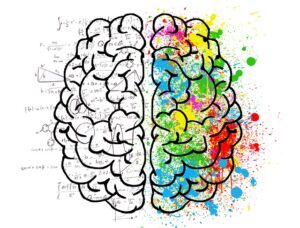Attracting the right talent is critical to business innovation, growth, and competitiveness. This explains why many businesses are increasingly prioritizing talent acquisition. Even so, the process of acquiring the right talent hasn’t been easy for many companies.
Getting employees with the right skills mix to fill a vacancy is a long and tedious one, overwhelming most human resource practitioners. As a result, 74% of employers have hired the wrong person to fill a position at one time or another according to a 2017 survey.
“Engaging the wrong hire can have severe consequences for companies, which include loss of time and funds during the hiring and onboarding processes.”
The good news is that businesses can do something to avoid such incidents and repercussions. One solution is utilizing data analytics for talent acquisition.
Data analytics is fueling all kinds of business decisions, from product development and marketing to sales and even team member recruitment. For instance, if your company wants to hire a sales representative, data analytics allows you to conduct sales assessment on potential candidates to predict their performance on the job.
Defining Analytics For Talent Acquisition
Analytics for talent acquisition involves utilizing data to determine your company’s recruitment strategies and processes. Companies with skills gaps want to attract and hire the best talents. The process of getting the right person often entails identifying professionals who have the organization’s strategic objectives in mind.
Human resource departments use analytics to gather insights from the staff and the company data. These insights help them understand:
- The key aspects that contribute to team member success
- Strategies for identifying suitable candidates
- Elements that make the organization attractive to future employees
This information is leveraged to attract, identify, and hire the right talents to fill the skills gaps in the company.
5 Things To Know About Analytics For Talent Acquisition
If your company plans to integrate analytics into talent acquisition, here are five things you need to know:
- Automation Takes Over The Manual Process
To get the most out of talent acquisition analytics, you need to know that in talent acquisition analytics, automation is applied in most recruitment processes. If you’re a human resource practitioner, you must realize that you have little time to organize information relating to the recruitment and hiring processes.
When done manually, most tasks in the recruitment process can take numerous hours. The use of data analytics to acquire talent allows you to automate time-consuming recruitment tasks, including candidate screening, tracking applications, and scheduling interviews.
- Employees Participate In Recruitment
The thing you need to know about talent acquisition analytics is that it creates opportunities for employees to participate in the recruitment process. Employees participate in the screening and selection processes. To facilitate their participation, HR explains what the company is doing and why to the teams participating in the process, allowing the company to leverage the collaborative recruitment model.
Traditionally, a top-down approach was used to make recruitment and hiring decision, but this has changed significantly in recent years. Talent acquisition is replacing this with a collaborative model wherein human resource teams and other departments participate in recruitment. This allows HR teams to work with other employees, often those holding positions below and above the candidates, to make recruitment decisions.
The collaboration builds trust among employees and enhances transparency in the recruitment process.
- Talent Acquisition KPIs Are Customizable
When it comes to determining recruitment efficiency, talent acquisition analytics allows companies to track recruitment processes using key performance indicators. Companies can use data analytics to track broad metrics, like market trends and workforce demographics. Furthermore, companies can apply analytics to inform specific recruitment decisions, including:
- Determining recruitment issues to prioritize during recruitment. These may include vacancies, the candidates to focus on, and how much resources to spend on them.
- Objectives of talent acquisition analytics. These could include the need to fast-track the hiring process, cut down on hiring costs, increase the quality of hires, and improve candidate experience.
- Characteristics of candidates may include general and job-related factors that applicants must be able to meet while on the job. This increases the quality, makes the process more efficient, solves problems for recruitment teams, and supports the organizational culture.
- Screening process, including the procedure of rating and selecting the most suitable candidates.
With these metrics, human resources managers can evaluate the strengths of recruitment teams and establish efficiency in the hiring process. Companies may build a dashboard software to identify recruitment trends, find correlations, and gather valuable insights to inform future recruitments.
If you choose to invest in a dashboard, opt for talent acquisition analytics software with built-in recruitment analytic solutions. This will allow your company to make better, more informed decisions.
- Data Insights Ease Talent Identification
Using data analytics to monitor the hiring process helps you effectively manage your application pipeline. It also enables you to determine which platforms are suitable for sourcing potential employees. Also, you can use analytics to determine whether the existing strategy you have for talent acquisition is working well or not.
The insights you get from the data you collect throughout the recruitment process make this faster, saving you time and other resources. Better, still, you can create, update, and even revise team member personas, job offers, and application procedures over time, based on data insights.
Final Thoughts
Employees are the most important resource in any company. Without their knowledge, experience, and natural talents, it’s virtually impossible for companies to achieve their revenue and growth goals.
This explains why companies are always searching for talented people to join their high-performing, growth-oriented, and highly focused teams. But, with so much to do, HR practitioners are often overwhelmed by the tedious activities that characterize the recruitment process. The tasks should be completed before hiring decisions are made.
Analytics for talent acquisition comes in handy, facilitating automation of time-consuming recruitment activities, candidate screening, tracking job applications, and scheduling interviews. With the milestones in data science, these processes can be accelerated efficiently and companies are empowered to identify highly talented candidates through performance predictions.









